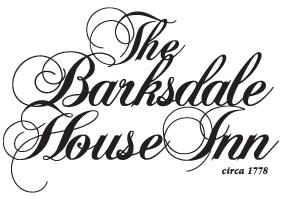Our History
Although the Barksdale House appears to be Victorian, it is actually the Regency Style typical of the Federal Period (early 19th century). While the construction date of the house was never documented, George Barksdale, to whom the house is now attributed, bought the land in 1778. He was a wealthy Charleston planter and one-time member of the South Carolina House of Representatives. He spent most of his time at his country residence, Youghall Plantation, but served a term in office as a tax inquirer and collector for his home parish. George's nephew, Thomas Barksdale, constructed the house on this property sometime between 1778 and 1817. In May of 1817, Thomas Barksdale sold the townhouse. From that time on, the house had numerous owners and occupants.
The Barksdale House is located at 27 George Street in the original Ansonborough district of Charleston, which was an area formerly known as the "Bowling Green." It was the city's first suburb and was platted-out in 1746. Its boundaries are King Street, Anson Street, Calhoun Street, and Hassell Street. By the end of the 18th century, Ansonborough was home to several wealthy merchants, tradesmen, and a few planters. This prime location boasted house on both sides of the street up until the 20th century and commercial activity just minutes away. Word-of-mouth believes that the two front rooms on the main floor were dedicated to the original Post Office of Charles Town, SC.
The Sanborn Fire Insurance Map of 1884 shows the house was only two stories high and had a couple of two-story subsidiaries. In the 1888 map, it refers to one of the subsidiaries as the "kitchen," and the other subsidiary, being equivalent in size, may have been the carriage house. The house remained much the same until around 1902, when the Map depicts it in the Victoria style with the additions of two one-story bay windows on the front of the house, and a French hipped roof that added an extra story to the house.
The interior now contains three floors of individually designed rooms. Some of the interior details include borders and fabrics of the 18th and 19th centuries. The remodeling of the house in 1985 included the installation of marbleized and stenciled slate mantels; widening of the stair hall; and updating of the staircase with a square newel featuring applied moldings, a finial, and Victorian balusters. There are ornate plaster moldings above chandeliers and light fixtures in most rooms. The original floors still remain in the house, and in some places you can still see the early cut-nails used, that were tapered on two sides and usually handmade. The house now includes unique furnishings and antiques.

